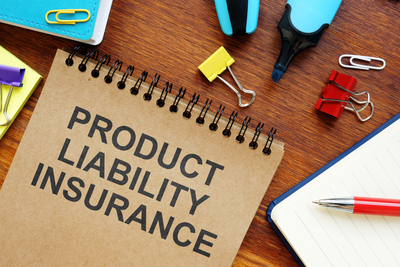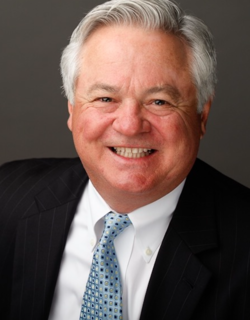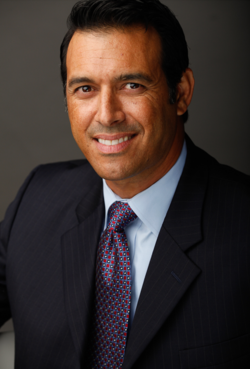By Eric Colby
For any company or corporate executive team, responding to an unexpected liability-insurance claim is not the time to find out that the business’ coverage is inadequate.
“We’ve had situations where someone was looking and they wish they found us three months ago,” said Bob Corwin, senior vice president of Alliant Insurance Services, an insurance consulting and brokerage service based in Irvine, California. “Most clients want to know that they have someone who understands their business.”

Product liability insurance is like life insurance for a manufacturing company—you need to know the right questions to ask before purchasing coverage.
Added Corwin’s partner, Franco Ganino, also a senior vice president at Alliant, “The ultimate goal is to provide defense should someone allege that their property has been damaged or they’ve been injured in some way through the use of your product.”
They made these statements during a recent webinar (the video can be viewed at https://learning.sema.org/on-demand-video) hosted by SEMA’s Motorsports Parts Manufacturers Council (MPMC). John Lambert, MPMC chair-elect, opened the online event, saying, “Today we’re going to cover product liability insurance, basically what is it, why do you need it, and if you have it, you may need to update it as your business grows and changes.”
With that he turned over the webinar to Corwin and Ganino, who explained that Alliant Insurance Services does not sell insurance coverage. Instead, as a SEMA benefit partner, Alliant acts as a consultant for SEMA members to make sure they have the right coverage.
“Our experience with the organization is one that we have taken seriously for several decades,” said Corwin. “We’re here to make sure SEMA members are protected properly.”
“Added Ganino, “SEMA defends, perpetuates and promotes the aftermarket industries and that aligns perfectly with our goals.”
In a quick poll, Lambert learned that 57% of the webinar attendees didn’t have product liability coverage, so Corwin and Ganino broke down the session into three primary segments: Section 1 covered the basics of product liability insurance, including how much a company needs and when to reassess those requirements; Section 2 explained how products are classified and how they impact what a company pays for coverage; and Section 3 explained how to be ready when a claim comes your company’s way.

Breaking It Down
Starting with the basics, Corwin and Ganino described product liability insurance as life insurance for a manufacturing company. It will protect a company from financial loss arising out of claims because it transfers the burden from the corporation to the insurance company. “Product liability is a critical element of transferring risk away from a manufacturer’s balance sheet,” said Ganino. It will pay for defense costs should there be a need to hire an attorney and will indemnify a third party for damages if needed.
Corwin explained that being more educated about the coverage lets an executive make a smarter choice at renewal time. It’s all about “making sure you have the proper coverage in place by maximizing the lowest cost possible with the best outcome with the insurance carrier and the coverage you have,” he said.
Technically speaking, product liability coverage is a subset of a general liability policy. It can be purchased individually, but most often, it’s part of a package. Part of the decision to purchase coverage can include determining that your company doesn’t need it. There are three paths a company can take. “You can transfer the risk by buying insurance,” said Ganino. “You can avoid the risk by not making the product, and the last one is to assume the risk.”
This is where asking the right questions before buying coverage comes into play. This is also where Alliant can play a key role because it doesn’t sell the insurance, but instead recommends coverage to companies. “You’re buying the expertise of the company, so if there’s a claim, they are ready to handle it,” said Ganino.
A typical liability policy generally covers a company’s aggregate, products/completed, operations aggregate, personal and advertising injury, per occurrence, fire legal liability and medical payment.
General policy limits start at $1 million with policy limits of $2 million for general aggregate; $2 million for products/completed, operations aggregate; $1 million for personal and advertising injury; $1 million per occurrence; $1 million for fire legal liability; and $5,000 for medical payments.
When it comes to assessing the risks and how much insurance is needed, the overall value of the company’s assets and the level of risk based on the products are key considerations. For example, if a company uses a wholesale distributor for its products, the manufacturer will want to be protected if someone buys through the distributor and files a claim.
“Those companies generally have insurance and legal departments that ask for $5 or $10 million,” said Ganino. With Alliant representing a company, he will push back against those numbers to ease the cost burden.
When shopping for liability insurance, a company should be aware of endorsements that exclude specific parts or uses of products. For example, an insurance policy could be considered to be “full coverage,” but it has an endorsement in the fine print for safety equipment or tires. If the company makes either of these two items and there’s a claim, there would be no coverage because of the endorsements.
The same goes for an employee using a personal car for business. If an incident occurs when an employee is using his/her own personal car and there’s an incident, a company will want to carry “hired and non-owned auto insurance coverage.” With the SEMA Show, many manufacturers basically lease a vehicle from a car company to display their products and accessories. An exhibitor is going to want to obtain coverage for that vehicle at least for the duration of the event.
Worldwide coverage is required for companies that do business outside their home country. “If you’re going to carry a distribution center in Germany, at that point you need to work with an agent that allows you to have defense in that country’s legal system,” said Ganino.
Then there’s the positioning or classification of products, and that’s where an experienced agency can prove valuable. “One of the things we found early on is insurance carriers having a big concern for various auto parts,” said Corwin. “One of the issues that came up was how were the companies marketing their products.”
For example, a low-risk category is restyling products like trim; medium-risk are powertrain products like pistons, rings and connecting rods. Safety equipment like suspension, brakes, steering are considered high risk.
“What we’re trying to do with underwriting is work closely with them based on these categories,” said Corwin. “How is the premium promulgated?”
Ganino said that different companies will approach the same part from a different angle. For example, is a bumper a higher-risk safety item or a low-risk trim part? “Make sure your product is put into a perspective of the lowest common denominator because it will affect the rate the carrier charges,” said Ganino. “A true operating part, if it fails, can have sudden overturn or upset consequences. It can cause a car to end up on its roof.”
It’s also important to pay attention to the type of policy. An occurrence form is preferred over a claims-made policy. With a claims-made policy, coverage is triggered by the date a company became aware of a claim and must notify the insurance carrier of a claim or potential claim. This must occur within the policy period, subject to a retroactive date. On an occurrence form policy, the coverage is in force on the date of the loss and the insurer responds with coverage. The claim may come years after the policy period passed, but the coverage would still apply.
“We’re seeing fewer claims-made policies to limit the amount to a high-exposure client,” said Corwin. A company with claims-made coverage would need to purchase a policy that provides prior-acts coverage as a bridge between the two.
When it comes to a new product, the most important thing is documenting everything that went into its development from design to testing. “What you document up front as to how you design the part, how it was put to use—there’s a deep conversation we like to have about how you prepare today for a claim tomorrow,” said Ganino.

When Claims Happen
Finally, we have the inevitable claim. That’s not to say that every part made by a company isn’t high quality and will result in a claim. Lawyers are trained to look for opportunities, and an accident involving a vehicle equipped with one of your components could be that
opportunity.
There are three types of product liability claims—defective manufacture, defective design and failure to provide adequate warnings or instructions concerning the use of the product.
While the first two are self-explanatory, “Failure to warn is when a manufacturer does not adequately inform the public of potential risks that may occur when their product is used by a consumer that leads to a product liability claim,” said Corwin.
Regardless of the type of claim, as soon as a company is informed of a claim on one of its products, the first step is to make sure its attorney and the claims adjuster from the insurance company are involved early. “Don’t admit fault,” said Ganino. “Make sure your broker knows, and follow conditions in your insurance policy that allow you to meet the obligations of the policy.”
Obviously, the goal is to never have to use product liability insurance, but that doesn’t mean it shouldn’t be taken seriously. A liability policy that isn’t tailored to your company and its products isn’t going to help when a claim is filed, so do your homework and make sure the broker and the coverage are what your company needs.
“There are a ton of great brokers in their areas who are car people,” said Ganino. “Make sure your agent has oil in his or her DNA.”





